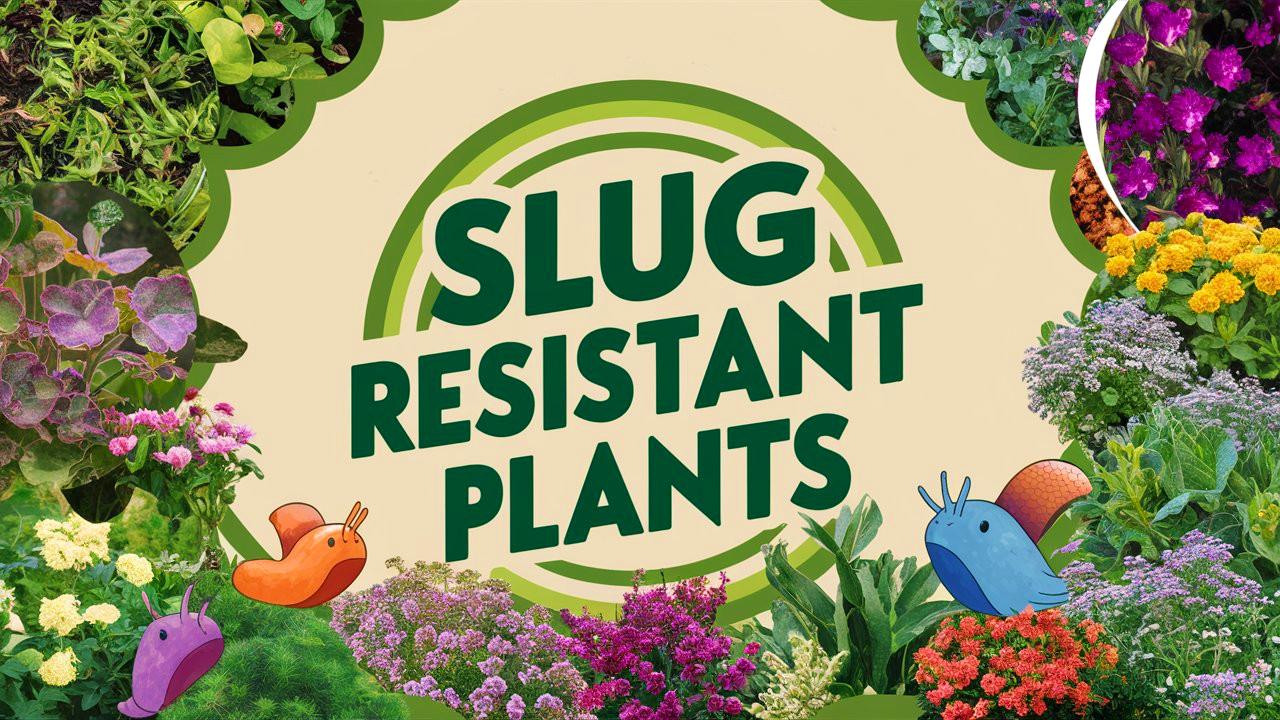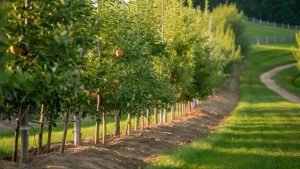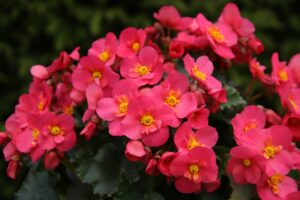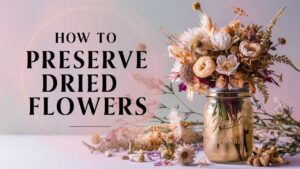Slug infestations in gardens can be a gardener’s nightmare, leading to the devastation of cherished plants and blooms. Finding effective solutions to deter these slimy pests is essential for maintaining a healthy garden. One of the most practical approaches is to choose slug-resistant plants.
In this comprehensive guide, we’re going to dig into twenty different plants known for their resistance to slugs, each accompanied by unique characteristics that make them great contenders for your garden.
Verbascum
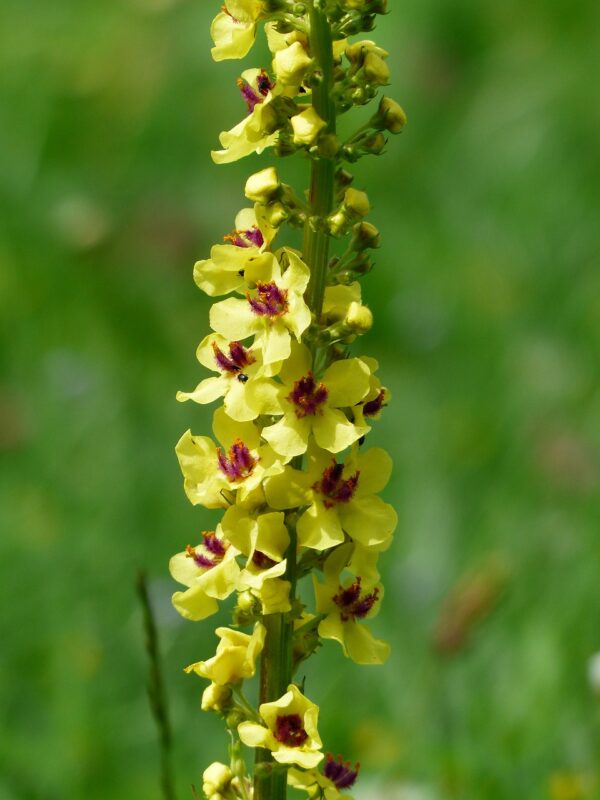
Verbascum, commonly known as mullein, is a hardy biennial or perennial plant that thrives in poor, dry soils and full sun. Its woolly leaves contain bitter compounds that are unappealing to slugs and snails, making them an excellent choice for slug-resistant gardens. Verbascum blooms with tall spikes of yellow, white, or purple flowers, creating a striking vertical element in garden design.
These plants are also beneficial for pollinators, attracting bees and butterflies, adding ecological value to your garden. Furthermore, Verbascum’s tolerance of drought means it can outlast slug infestations without succumbing to moisture-loving pests. By incorporating Verbascum into your space, you not only gain slug deterrence but also enhance the biodiversity of your garden.
Geum
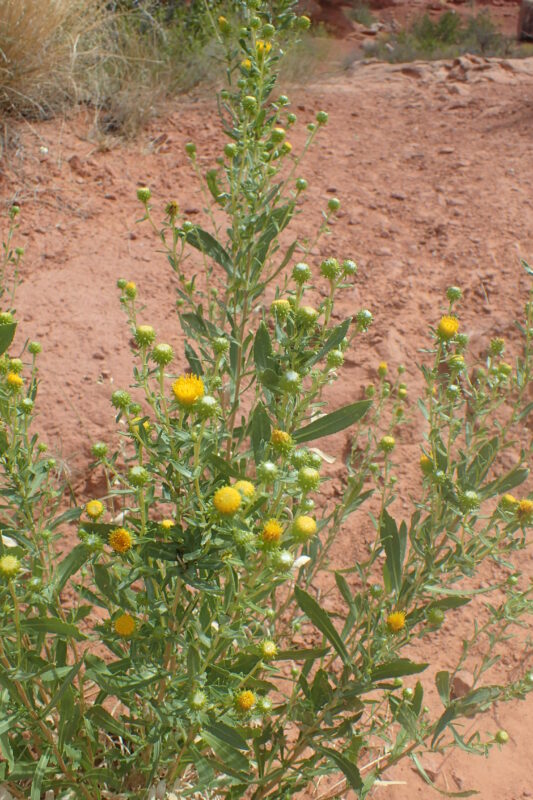
Geum, often referred to as avens, presents a colorful addition to any garden landscape. With its vibrant orange, yellow, or red flowers, Geum is not only visually appealing but also resistant to slugs due to its fuzzy foliage that pests tend to avoid. These hardy perennials are generally low-maintenance, flourishing in well-drained soil, and are tolerant of various light conditions.
An added bonus of planting Geum is its ability to attract beneficial insects, such as bees and butterflies, while providing a nectar source throughout the summer months. The leaves and blooms can also add interesting textures to your garden beds or borders. Choosing Geum is a practical approach that combines beauty, biodiversity, and slug resistance.
Agapanthus
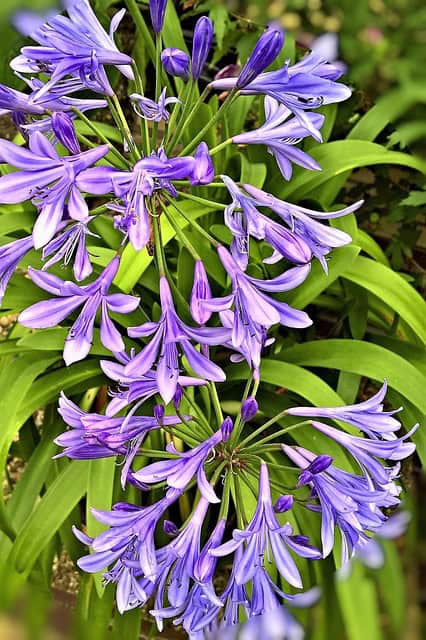
Agapanthus, or African lily, exhibits stunning clusters of blue or white flowers atop sturdy stems, making it a dazzling choice for any garden. Its thick, strap-like leaves are not favored by slugs, offering protection against these garden nuisances. Agapanthus thrives in sunny locations and prefers well-draining soil, making it adaptable to various garden styles.
This perennial not only provides slug resistance but also requires minimal pruning and care. As a drought-tolerant plant, Agapanthus can survive periods without water, further reducing its vulnerability to slug damage. When planted in large masses, these striking plants can create drama and color in your garden, while their resistance to slugs ensures that your hard work remains protected.
Peony
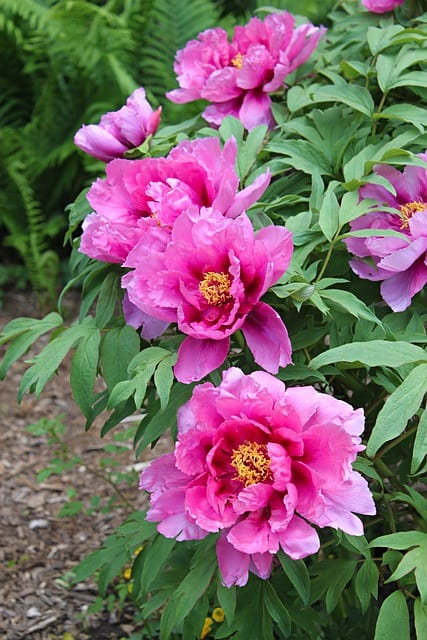
Peonies are beloved for their lavish and fragrant blooms, bringing a classic elegance to the landscape. They boast thick, leathery leaves that slugs find unappetizing, making these perennials a reliable choice for gardeners battling slug infestations. Peonies flourish in well-drained soils and benefit from full sun to partial shade, making them an adaptable addition to many garden layouts.
These perennial beauties also provide benefits beyond pest resistance, including attracting a variety of pollinators. Peonies are long-lived, often surviving for decades when planted correctly, making them a worthwhile investment for any garden. The added brilliance of their blooms ensures that they will not only withstand slug damage but also enhance the visual appeal of your outdoor space.
Iris
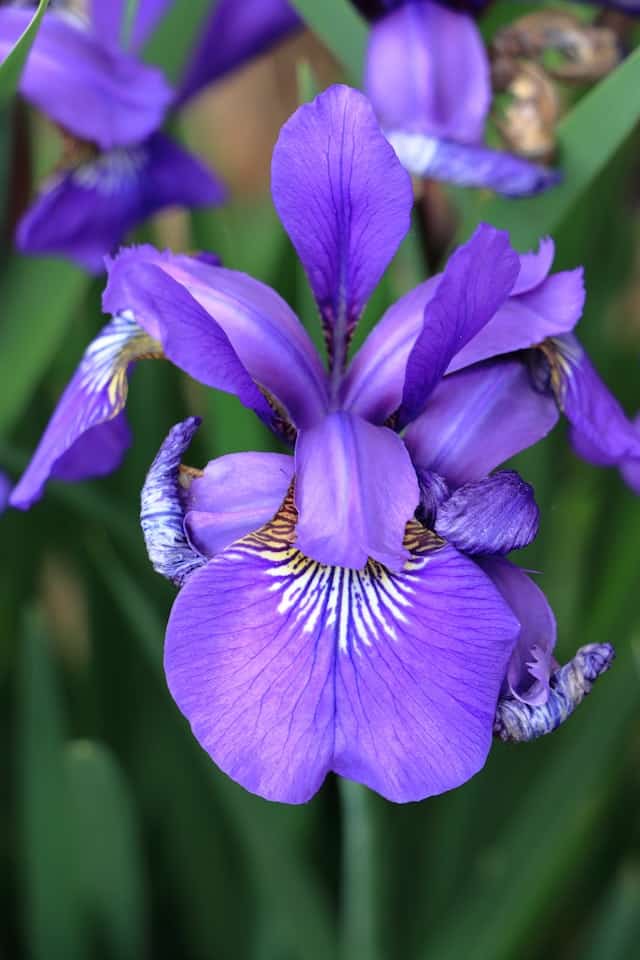
Irises are cherished for their striking flowers that come in an array of colors, ranging from deep purples to bright yellows. They possess sword-like leaves that slugs typically bypass, making them a reliable plant when seeking to thwart these pests. Irises are adaptable, thriving in many soils and bloom during spring or early summer, offering vibrant color and interesting shapes.
In addition to their slug resistance, irises are perennial plants that can naturalize over years, creating beautiful carpets of color in your garden. They are fairly low-maintenance, requiring minimal care, while their striking blooms are a feast for the eyes and a draw for bees and butterflies. With irises, you can secure a slug-resistant garden and enjoy captivating blooms season after season.
Californian Poppy
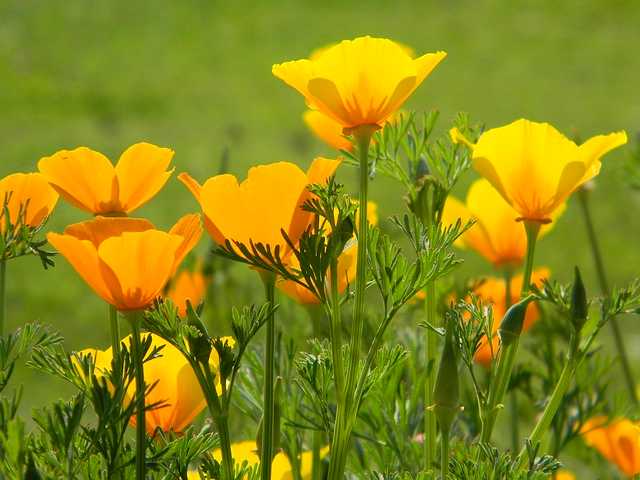
The Californian poppy, known for its brilliant orange and yellow flowers, is a quick-growing annual or perennial that thrives in sunny gardens. Its resilience and ability to thrive in poor soils make it a perfect choice in the battle against slugs. Although slugs may munch on softer foliage, Californian poppies have a bitter taste that deters such pests.
This plant is drought-tolerant and versatile, ideal for rock gardens, meadows, or borders. Its long blooming season and ease of maintenance make it a fantastic addition, especially in xeriscaping plots. In addition to their resistance to slugs, these poppies attract pollinators, such as bees and butterflies, enriching your garden’s ecosystem.
Lobelia
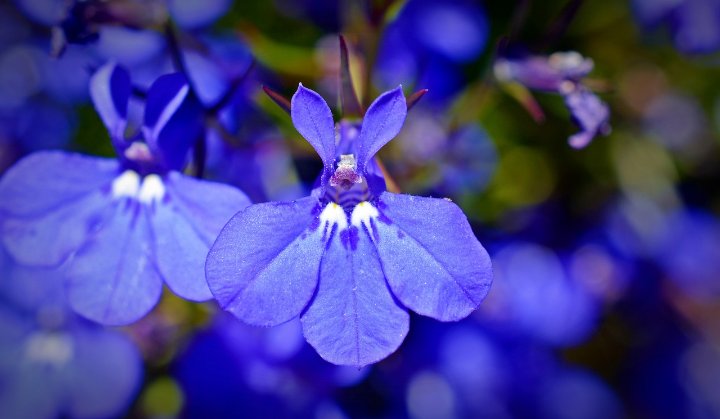
Lobelia, with its cascading blooms in blue, purple, or white, is a charming annual or perennial that works well in hanging baskets or borders. While some varieties can attract slugs, others—particularly those with thicker leaves—are much less likely to be consumed. Thus, it’s important to select specific varieties known for their slug resistance, focusing on the taller species rather than the trailing types.
Lobelia thrives in well-drained soils and partial to full sun, adding delicate beauty to garden spaces. Not only do these plants flourish in your garden, but their nectar-rich flowers appeal to hummingbirds and butterflies, enhancing the liveliness of your outdoor area. By carefully choosing your Lobelia, you can enjoy stunning blooms while reducing the risk of slug damage.
Ferns
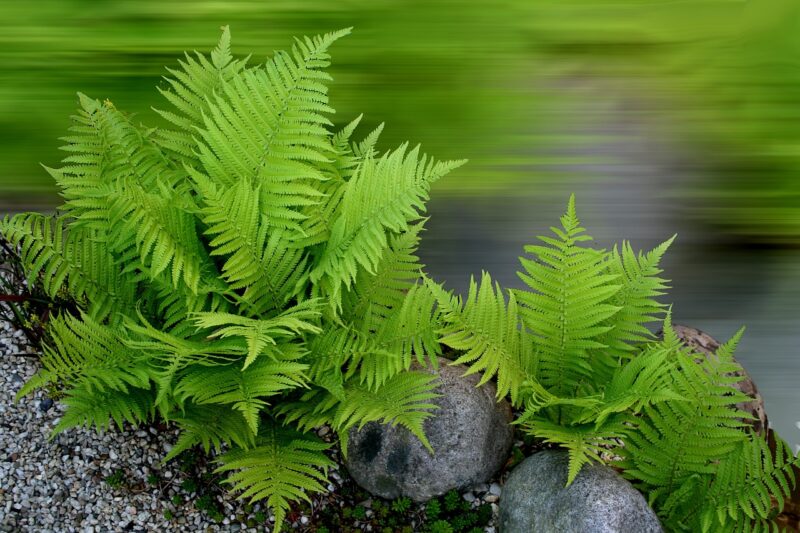
Ferns provide a lush and textures-rich option for gardens, quickly becoming a popular choice for shaded areas. Their fronds often contain tannins and other compounds that deter slugs, making them naturally resistant to these pests. Various fern species adapt well to different light and moisture conditions, making them extremely versatile garden additions.
Beyond their slug resistance, ferns offer unique beauty and exceptional ecological value. They create habitats for beneficial wildlife, including insects and birds. The rich, green foliage of ferns adds an element of luxury to the garden while thriving in conditions where many flowering plants might falter. Introducing ferns in shaded or woodsy areas of your garden can effectively deter slugs while creating a serene, lush atmosphere.
Heuchera
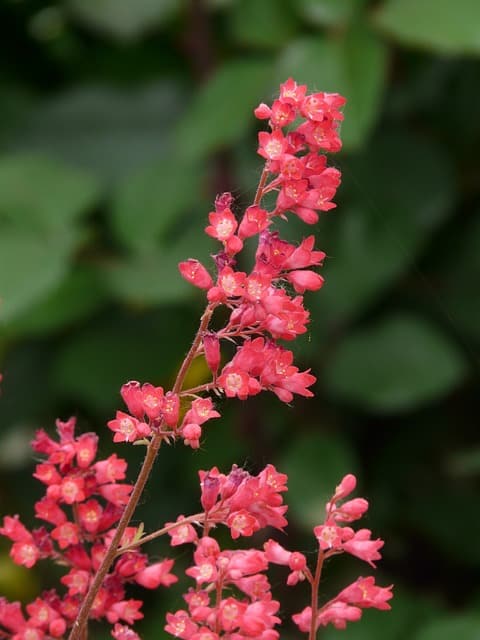
Heuchera, also known as coral bells, is distinguished by its colorful foliage and delicate flower stalks. The thick, textured leaves are unappealing to slugs, and the range of colors available—from deep purples to bright greens—makes this plant a vibrant addition to various garden styles. Heuchera prefers well-drained soil and partial shade, adding versatility to placement.
In addition to slug resistance, Heuchera’s ability to attract hummingbirds and pollinators enriches the biodiversity of your garden. They require little maintenance and thrive in a variety of conditions, enhancing your garden with vibrant color year-round. Utilizing Heuchera ensures both the beauty of your garden and its resilience against slug damage.
Rose
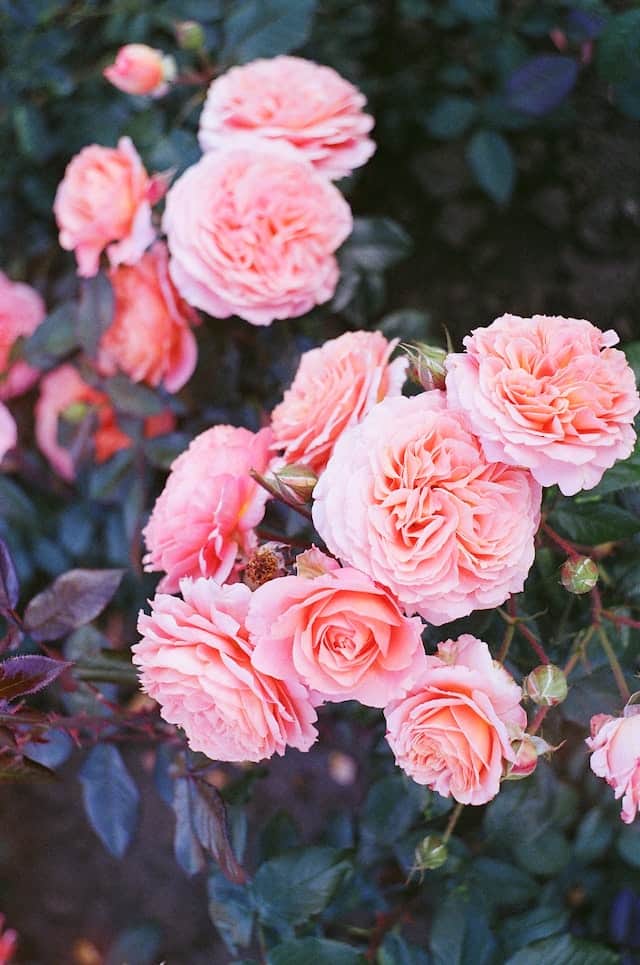
Roses are iconic in gardens, known for their breathtaking blooms and enticing fragrances. While many species can be susceptible to pests, robust varieties often have thicker, leathery leaves that are less appealing to slugs. Additionally, roses thrive best in well-drained soil with plenty of sun exposure—conditions that tend to mitigate the presence of slugs.
Choosing slug-resistant rose varieties empowers gardeners to enjoy their beauty without constant worry about invasive pests. Beyond the aesthetic aspect, roses are also well-appreciated for their ability to attract pollinators. Their sprawling blooms ensure that your garden’s appeal remains high, while their resilient nature allows them to persevere against occasional slug encounters.
Erigeron (Fleabane)
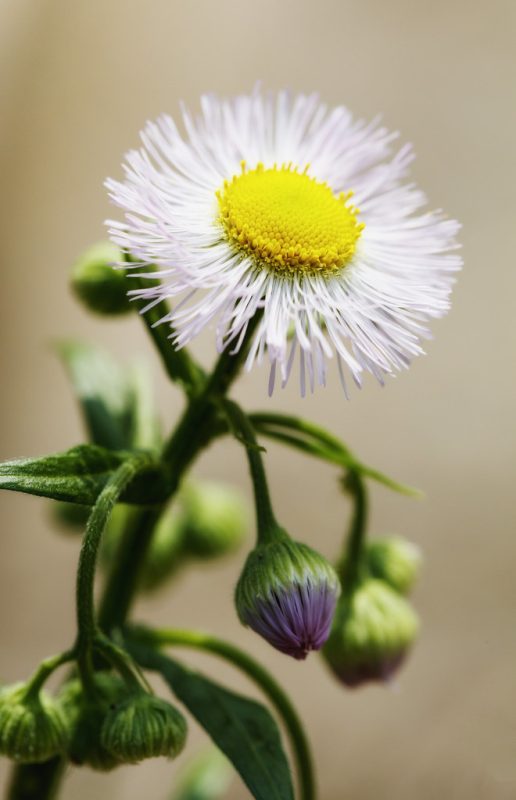
Erigeron, commonly known as fleabane, presents charming daisies that bloom throughout summer, attracting butterflies and pollinators. This perennial plant has fleshy leaves that slugs find distasteful, providing a level of protection against infestation. Growing in sunny spots and tolerating poor soils makes Erigeron a low-maintenance choice for the garden.
Beyond its pest resistance, Erigeron provides an extended blooming period, offering visual appeal that lasts throughout the season. Its flower heads can be used in cottage-style gardens, contributing to a cheerful, informal garden design. As a prolific bloomer, it harmonizes beautifully with various companion plants, enriching the garden ecosystem while ensuring slug resistance.
Knautia Macedonica
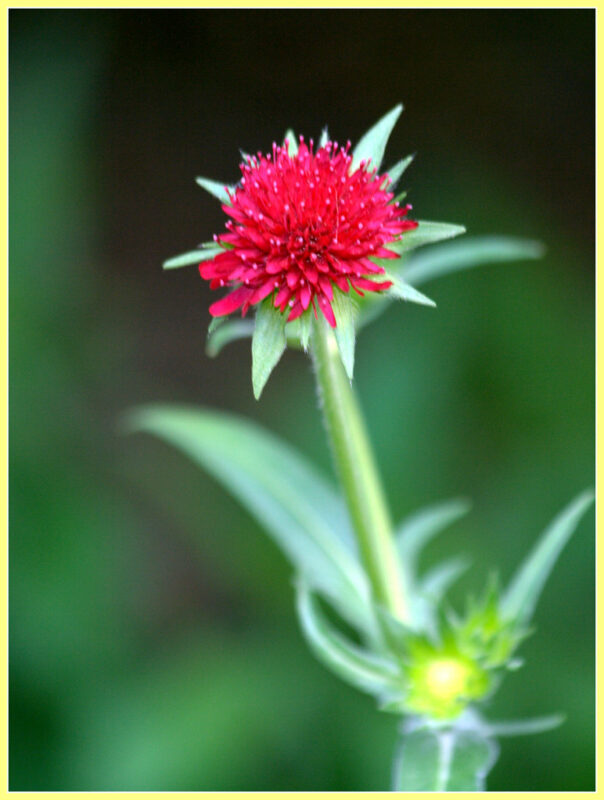
Knautia macedonica brings a unique flair to any garden space with its intimate and spiky flower heads, blooming from late spring to fall with shades of red and pink. This perennial is naturally resistant to slugs, as its leaves contain tannins that deter these pests. Thriving in well-draining soils and full sun or light shade, Knautia is a versatile addition to stately gardens or meadows.
The intricate structure of these flowers makes them excellent for attracting a variety of pollinators. Their long flowering period ensures continuous blooms, providing color and vibrancy from spring to frost. By incorporating Knautia macedonica, gardeners can achieve both resistance to slugs while enjoying the visual interest and seasonal diversity that they bring to flowering beds.
Rosemary

Rosemary is not only a beloved culinary herb; it is also a resilient plant known for its aromatic foliage and resistance to pests. With its woody stems and needle-like leaves, rosemary is less appealing to slugs, ensuring it’s a safe choice for your garden. This Mediterranean plant thrives in sunny locations with well-draining soil, embodying drought tolerance.
In addition to protecting your garden from slugs, rosemary serves a dual purpose by providing fresh herbs for culinary uses. Its fragrant leaves attract honeybees and other beneficial insects, adding ecological benefits to its robust structure. By integrating rosemary into your garden space, you gain aromatic beauty and natural slug resistance, ensuring a thriving environment.
Geranium
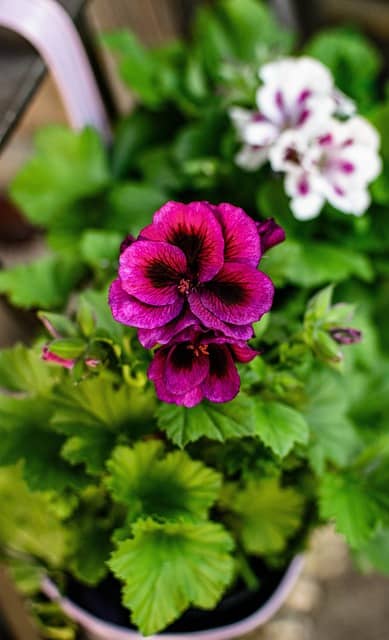
Geraniums, also known as cranesbills, are cheerful perennials that thrive in various conditions. Their thick, aromatic leaves tend to deter slugs, while their delicate blooms add color and texture to any garden. Geraniums are relatively low-maintenance, flourishing in both sun and partial shade, while tolerating a range of soil types.
Apart from their pest-repelling characteristics, geraniums offer the benefit of long-lasting blooms and the capability to propagate easily, making them a smart addition for gardeners seeking both beauty and sustainability. With their bright colors and diverse selection available, geraniums will help brighten up your garden and keep it slug-resistant.
Allium
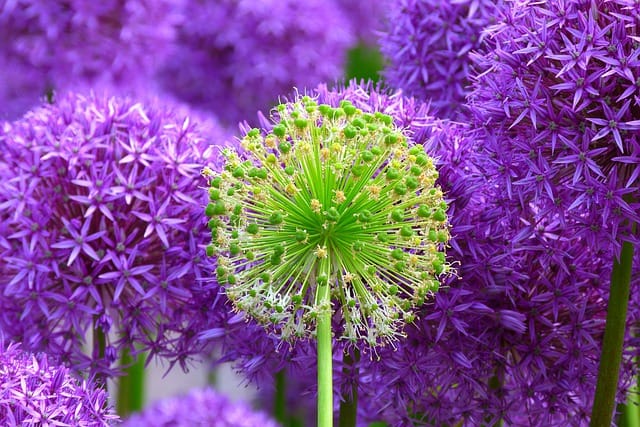
Allium, famous for its striking spherical flower heads, represents a fantastic choice for the slug-resistant garden. The pungent aroma of allium stems and bulbs often deters slugs, preventing them from creating havoc. This bulbous perennial flourishes in sunny locations and well-drained soils, adding elegance to borders and flower beds.
Beyond their beauty and toughness against pests, alliums are also beneficial for the ecosystem. They attract beneficial pollinators, while their mere presence can help repel other pests. Thus, integrating Allium into your garden ensures an attractive landscape while simultaneously maintaining a healthy, slug-free environment.
Verbena Bonariensis
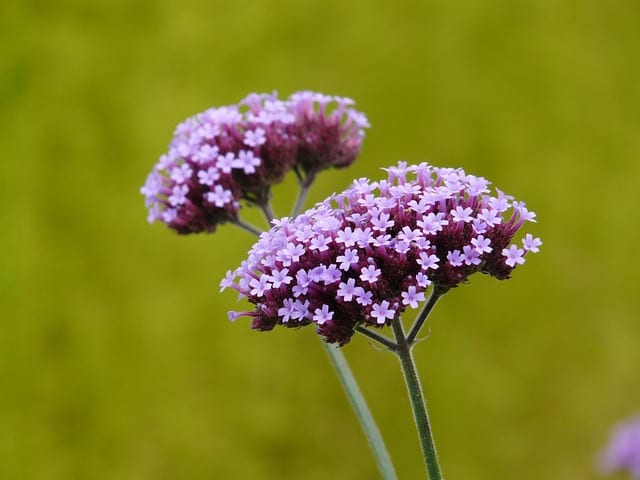
Verbena Bonariensis is a tall, striking perennial known for producing clusters of vibrant purple flowers that butterflies adore. The stiff stems and coarse leaves are relatively unappealing to slugs, offering a level of natural resistance. This plant flourishes in sunny areas and well-draining soils, proving to be both a visually stunning and practical choice for gardens.
The extended blooming period from summer to frost ensures continuous color and vitality, making it a favorite among pollinators. Verbena Bonariensis adds height and elegance to cottage gardens, borders, or wildflower patches. By welcoming this plant into your landscape, you’re investing in both beauty and slug resistance.
Jasmine
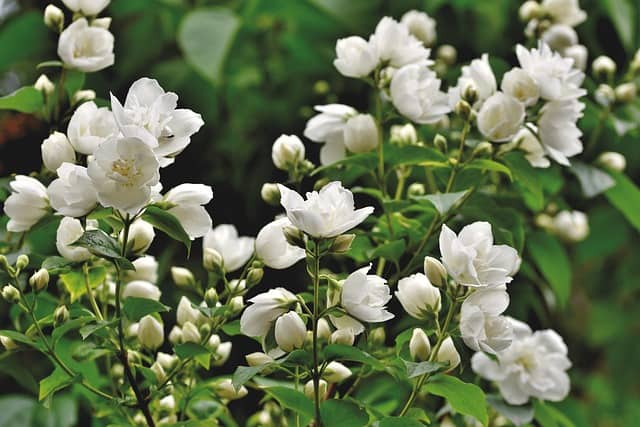
Trachelospermum jasminoides, also known as star jasmine, is a vigorous vine that delights with fragrant, star-shaped flowers. Its tough foliage and strong growth habit make it less appetizing to slugs and offer a fragrant touch to trellises, fences, or garden walls. This lovely plant thrives in sunny areas with well-draining soil.
Not only does this plant resist slugs, but it also attracts a myriad of pollinators, enriching your garden’s biodiversity. Star jasmine readily climbs, allowing for vertical growth in spaces where horizontal surfaces may be limited. By incorporating this stunning vine, you can successfully create a slug-resistant and aromatic garden feature.
Aquilegia
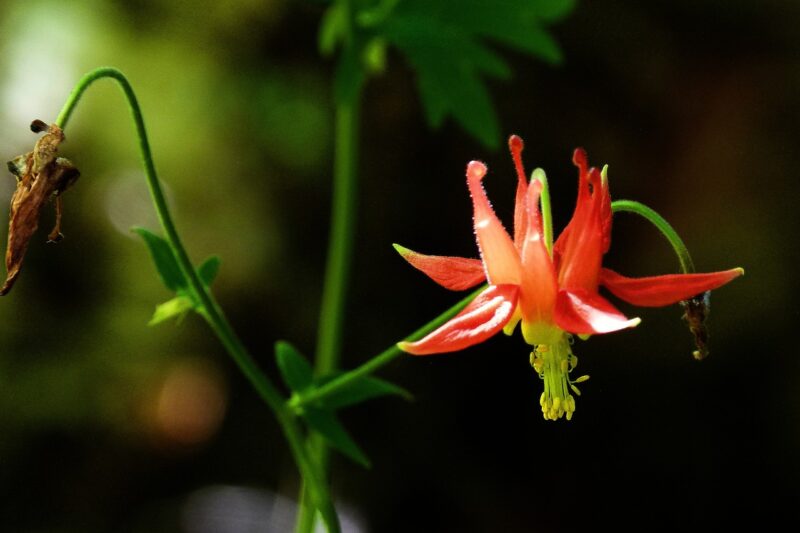
Aquilegia, or columbine, is a graceful perennial characterized by its delicate, nodding flowers that often boast interesting colors and shapes. While slugs may occasionally target softer plant varieties, the strong fragrance of many Aquilegia species can repel these pests. They appreciate partial shade and adaptable soil conditions, making them versatile for garden choices.
The unique flowers of Aquilegia are not only beautiful but attract pollinators like bees and hummingbirds, promoting a rich biodiversity. Furthermore, they can self-seed, providing additional opportunities for seedlings in the following years. By introducing Aquilegia into your landscape, you ensure a blend of aesthetic appeal and resistance to slug attacks.
African daisy (Osteospermum)
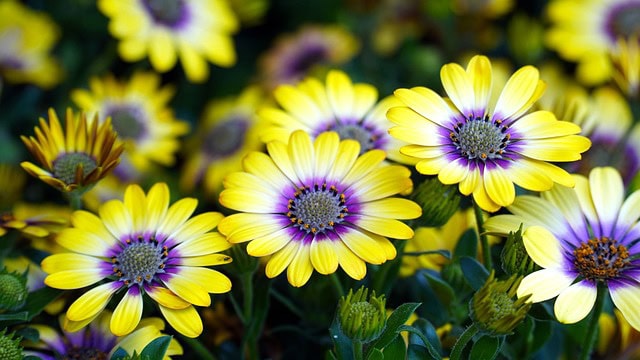
Osteospermum, or African daisy, presents a burst of color in gardens with their vibrant blooms that span various colors, such as purple, pink, and white. Their sturdy, thick leaves are typically less appealing to slugs, making them a reliable option for gardeners. Osteospermum thrives in sunny conditions and prefers well-drained soils, ensuring beauty with less maintenance.
This resilient plant attracts a variety of pollinators, enhancing ecological harmony within the garden. The long bloom period stretches from spring to fall, providing a continuous visual spectacle. Incorporating Osteospermum into your garden not only enhances slug resistance but also adds stunning color and friendliness to its ecosystem.
Euphorbia
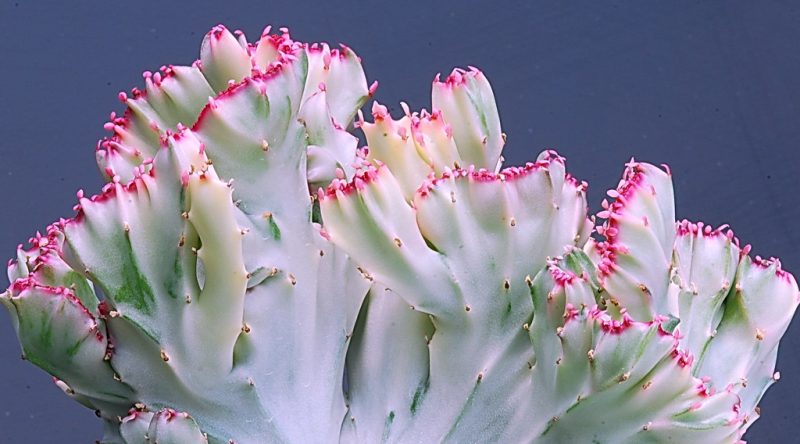
Euphorbia offers a unique range of varieties from ground covers to tall perennials, each known for their succulent, milk-producing stems that slugs tend to avoid. This adaptable plant thrives in poor, dry soils and full sun, making it suitable for xeriscaping or low-water gardens. Its varied textures and shapes add visual interest, staying slug-resistant through harsh conditions.
Beyond their resistance to slugs, many Euphorbia species are drought-tolerant, which is a huge plus for gardeners looking to conserve water. Some are even fantastic for attracting pollinators and beneficial insects, enhancing the ecosystem’s health. Euphorbia represents a wise addition to gardens focusing on color, texture, and resilience against pests.
Penstemon
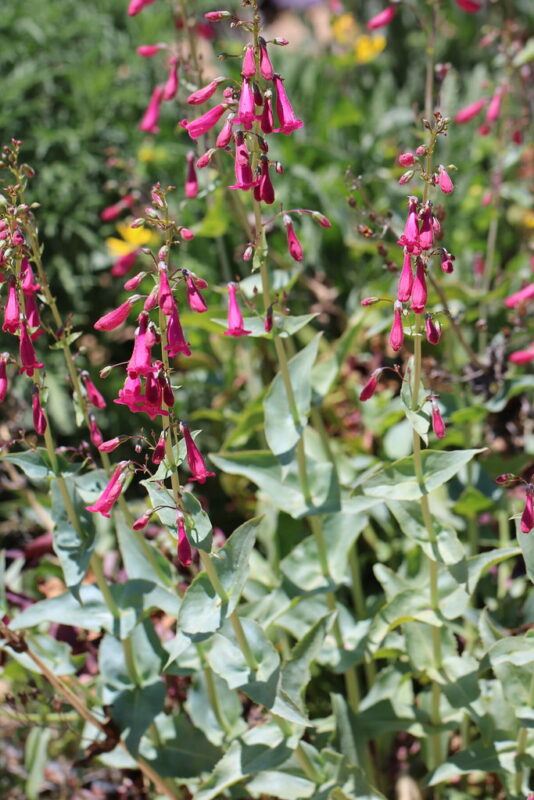
Penstemon, commonly known as beardtongue, provides elongated tubular flowers that march along sturdy stems, making a striking addition to garden beds. These robust perennials are less palatable to slugs, ensuring they flourish in the garden. Penstemon is hardy and drought-tolerant, thriving in sunny locations with well-drained soils.
As a late-spring and summer bloomer, they contribute flair to the garden and attract hummingbirds and other pollinators. Given their striking appearance and limited susceptibility to slugs, Penstemon effectively combines beauty and practicality, making them an essential choice for any slug-resistant garden.
Ajuga
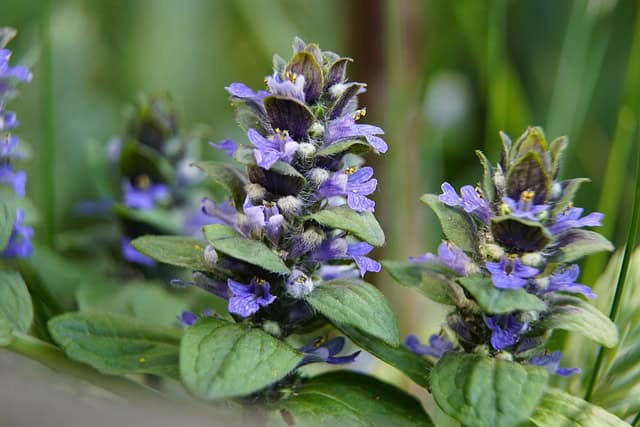
Ajuga, or bugleweed, offers a hardy ground cover option that produces attractive blue or purple flower spikes. This low-growing perennial is formidably resistant to slugs due to its dense foliage and tough structure. Ajuga thrives in moderate to fully shaded areas, providing ground coverage where other plants might falter.
Besides their pest resistance, Ajuga brings color and texture to shady spots, making them an excellent choice for woodland gardens. Their extensive root systems help in suppressing weeds while adding visual interest. Incorporating Ajuga into your landscape provides slug resistance and an elegant way to transform shaded areas into vibrant spaces.
Alchemilla Mollis
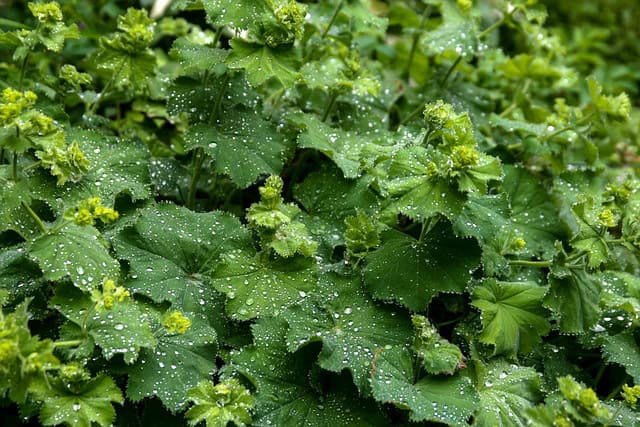
Alchemilla Mollis, or lady’s mantle, showcases soft, round leaves with delicate, chartreuse flowers. The leaves’ fuzzy texture is off-putting to slugs while providing an attractive ground cover. This perennial prefers well-drained soil and thrives in sun to partial shade, making it adaptable for various garden designs.
Beyond pest resistance, Alchemilla Mollis is known for its ability to collect dewdrops, creating a stunning visual effect in morning light. It also attracts pollinators while providing a lovely ground-level feature in borders or under shrubs. By considering Alchemilla Mollis, gardeners secure a slug-resistant choice wrapped in beauty.
Hellebores
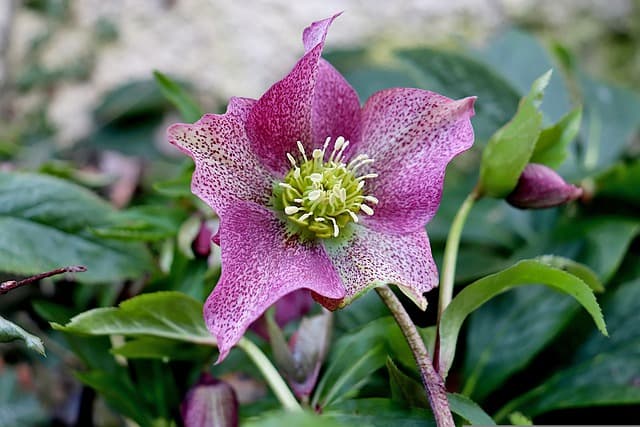
Hellebores, often known as Lenten roses, are perennial flowers that bloom in late winter to early spring, providing one of the first signs of color in gardens. Their leathery leaves are unappealing to slugs, making them a resilient option for your outdoor space. Hellebores thrive in shaded areas and tolerate various soil types, adding versatility.
The elegant flowers come in shades from white to deep purple, enhancing the garden’s aesthetic. Hellebores are also appreciated for their ability to attract pollinators while providing a long-lasting visual presence. Gardeners can enjoy the beauty of Hellebores while benefitting from natural slug resistance throughout the cooler months.
Lavender
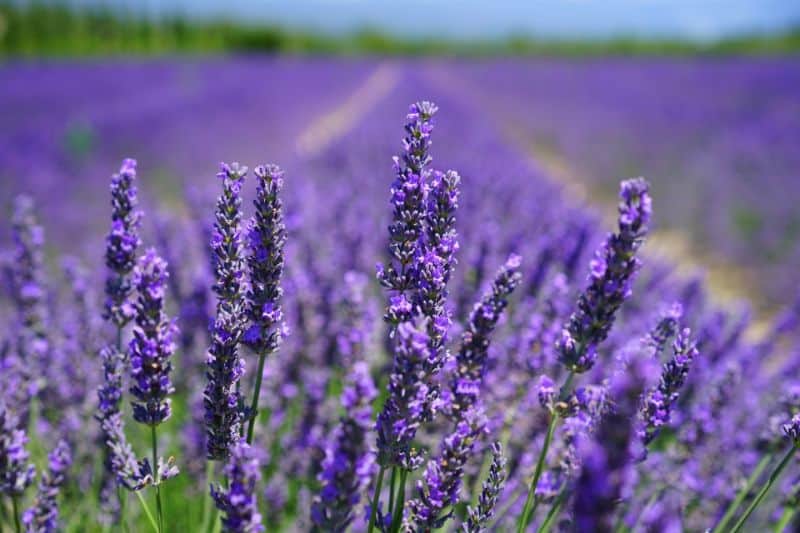
Lavender, celebrated for its stunning purple blooms and aromatic fragrance, serves multiple purposes in any garden. The strong scent and texture of the leaves are instinctively deterrent to slugs. Lavender thrives in sunny locations with well-draining, sandy soils, representing a rugged option for gardeners.
Besides their resilience against pests, lavender attracts bees and butterflies while offering culinary and medicinal uses. It requires minimal watering and maintenance, reflecting its suitability for low-water gardens. Adding lavender provides both an inviting aroma and robust slug resistance, along with attracting essential pollinators.
Campanula
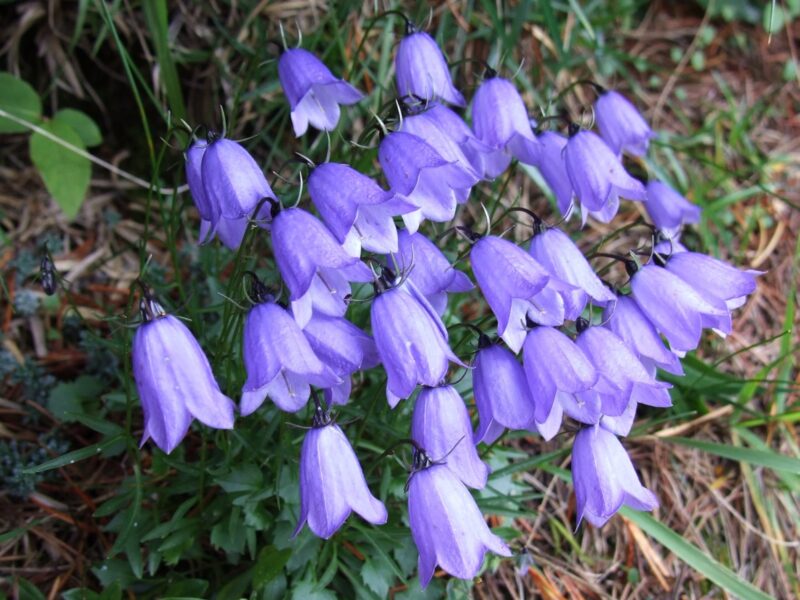
Campanula, or bellflower, showcases delightful bell-shaped blooms that create a charming display in gardens. While some varieties can be susceptible to slug damage, many robust species have leaves unpalatable to slugs. Campanula thrives in a variety of soil types and prefers well-drained conditions, making it easy to incorporate into any space.
These flowers bloom in various colors, from deep blues to whites, enhancing the aesthetic with their gentle, whimsical shapes. Besides their scenic beauty, Campanula attracts bees and butterflies, adding to the lush biodiversity of your garden. Home gardeners can enjoy delicate blooms while mitigating slug threats through careful species selection.
Cyclamen
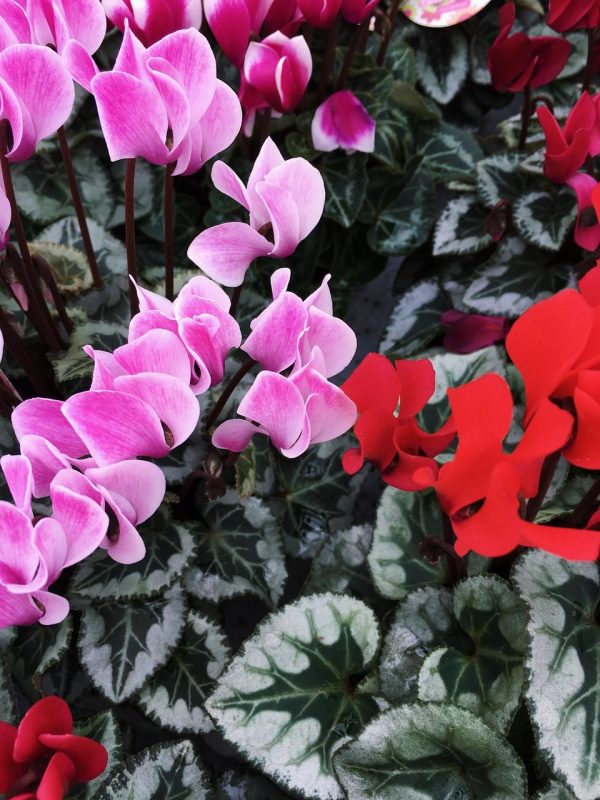
Cyclamen is a dainty perennial poised to brighten shaded areas with its heart-shaped leaves and colorful blooms. The tuberous roots and foliage tend to deter slugs, making them a strong candidate for slug-resistant gardens. Cyclamen thrives in well-draining soils and partial shade, creating harmonious under-plantings.
Beyond their slug resistance, these charming plants add elegance and a pop of color during the cooler months, as many varieties bloom in fall and winter. Cyclamen attracts beneficial insects while creating lush ground cover beneath trees or shrubs. Their attractive features, combined with pest resistance, make Cyclamen an outstanding choice for enhancing your garden.
Hydrangeas
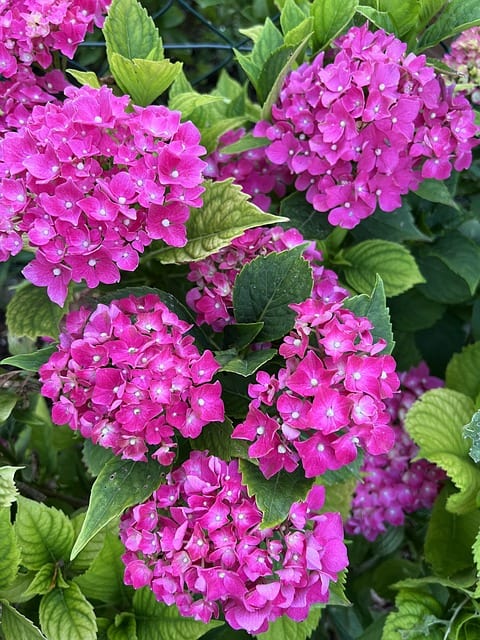
Hydrangeas are well-loved for their magnificent blooms that can transform an entire garden with their vivid colors. Their resilience primarily lies in their thick leaves, which are less appealing to slugs. These expansive shrubs thrive in partial sun and require consistent moisture, making their pest defense an added bonus.
These hardy plants not only provide stunning displays but also draw in pollinators and contribute to the garden’s overall allure. The hydrangea’s versatility in types and colors ensures that there are many options to select from, making them an essential addition for slug-resistant landscapes.
Hylotelephium (formerly known as Sedum)
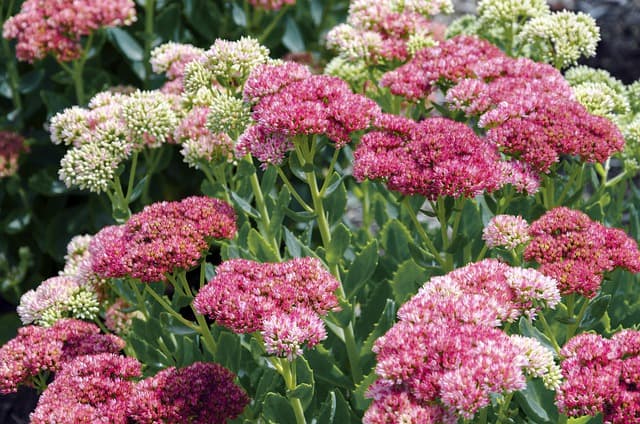
Hylotelephium, previously classified under Sedum, encompasses a striking variety of succulent perennials noted for their fleshy leaves. These thick, water-storing leaves deter slugs, providing a significant benefit against invasions. Hylotelephium thrives in full sun and poor soil, often appearing in rock gardens or drought-resistant landscapes.
The fall bloom season showcases vibrant clusters that benefit pollinators, ensuring your garden remains lively outside the primary growing months. The dense foliage helps suppress weed growth while augmenting the garden’s aesthetic appeal. By adding Hylotelephium, gardeners can embrace the challenges of slugs while enjoying a sustainable and beautiful landscape.
Sea Holly (Eryngium)
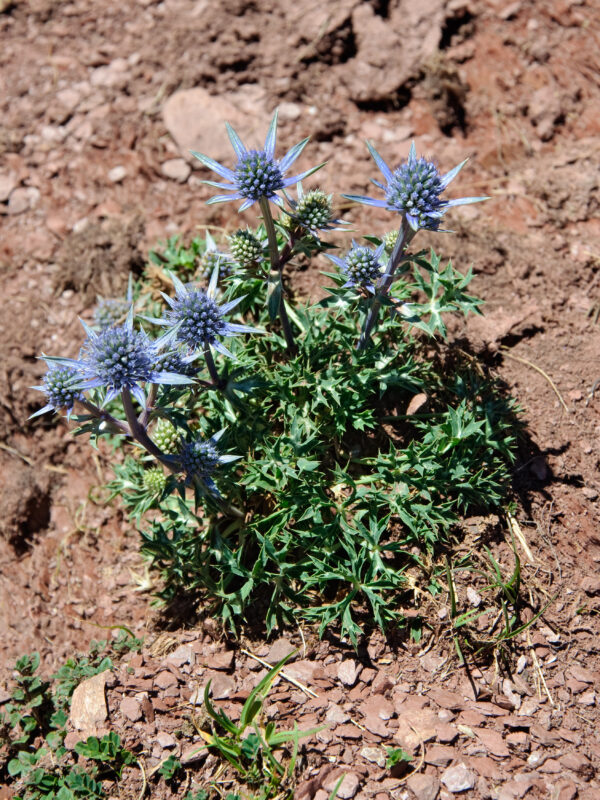
Eryngium, commonly known as Sea Holly, brings an architectural element to garden borders with its spiky structures and vibrant blue flowers. Its leaves can contain compounds that repel slugs, allowing these stunning plants to flourish even in areas prone to pest attacks. Sea Holly is adaptable to poor soil conditions while thriving in full sunlight, representing a resilient addition to any landscape.
Eryngium is also an excellent selection for pollinators, attracting bees and butterflies while its unique form adds interest. These perennial beauties bloom in late summer to fall, ensuring your garden maintains color and vitality as the seasons transition. Promoting robust Eryngium can help repel slugs while enriching the overall landscape.
Conclusion
Incorporating slug-resistant plants into the garden provides a proactive approach to managing these garden intruders while enhancing the overall aesthetic, meaning that fighting slugs doesn’t need to sacrifice beauty.


